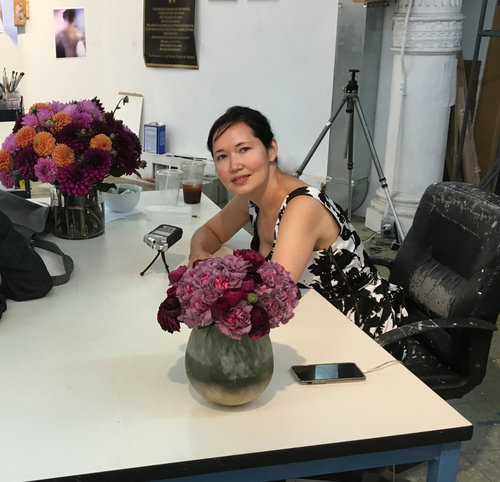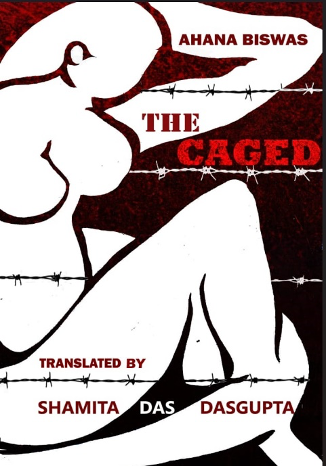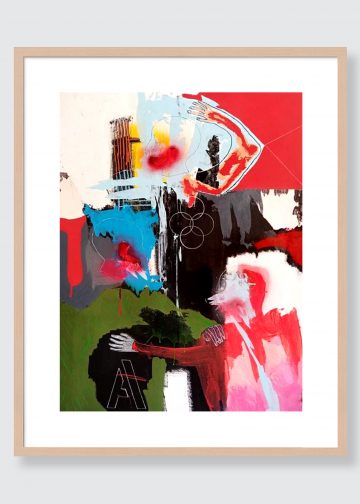KHANH DINH
What message would you like The Creative Process to convey to its collaborating artists, creative thinkers and viewers?
MIA FUNK
What is very important to me is to create work that is meaningful, not only a beautiful painting that’s aesthetically pleasing or a story about limited personal experiences, but to reach beyond my particular concerns to speak to others and their concerns and interests, to do something that inspires the next generation and which is larger than myself.

It’s very obvious that we’re living in critical times with the environment, with social unrest, and that creativity is crucial. To build a better future starts with imagining a better tomorrow.
And so I asked myself, what do I know as an artist? And how can I use what little I know to try to make the world a better place? Well, I have some skills. And I know a lot of people, passionate artists and creative thinkers who have collectively accomplished great things which are inspiring for students just starting out. And those collective insights can help young people find their voices, become the artists, leaders, inventors of tomorrow who will find the solutions to today’s problems. This is my hope.

KHANH DINH
As the founder of The Creative Process can you please let me and the audience know a little bit more about the non-profit and your role in it?
MIA FUNK
The Creative Process is a traveling exhibition and international educational initiative. And I’ve been involved with literary museums going back over 20 years. I’m an artist and writer and helped launch literary museums and cultural centers, so this interest in the creative process has been with me all my life. I painted portraits for the Dublin Writers Museum and I’m working on them for the American Writers Museum. As part of the research for this, I did interviews with American writers and asked them about books and writers that had been important to them. They spoke about being curious, interested and influenced by writers and other artists from not just America but all over the world. I realized at that stage that there was a need for a parallel international project that embraced many disciplines. It’s a way of bringing people from a variety of backgrounds and experiences together. So it’s been a really interesting learning process. When we started, it was launched at the Sorbonne, the inaugural exhibition was held there. And it’s grown quite a lot to embrace–although it initially was writers and filmmakers and some other artists–creative thinkers across a variety of disciplines. I’m conducting a lot of these interviews, and I’m doing portraits inspired by the conversations and the works of the interviewees. I’m also liaising with students in universities and providing mentorship, so now students are involved in that process too. The Creative Process keeps on growing through the great input of students and faculty and the different people involved.


KHANH DINH
Can you elaborate a bit on what you mean when you say multidisciplinary? Do these creative thinkers come from mostly artistic or creative backgrounds, or would that also include scholars and thinkers of other disciplines as well?
MIA FUNK
Oh yes, definitely. It’s multidisciplinary. It’s not just artists. We have a concentration of writers, but we have also published 20-page academic essays on our website. In the exhibitions, there’s not room for that. Our online platform allows us to include work from all different kinds of people, and I think academic writing is creative since they’re doing a lot of thinking about creativity, but through an academic lens.
I am on the advisory board of the European Conference for the Humanities, and we have worked with them as well. We had an exhibition in Belgium at K.U. Leuven in the Central Library and then also most recently in Athens at the Christian and Byzantine Museum. The European Conference for the Humanities is composed primarily of scholars, so that would be another element of our audience, but we’re interested in the general public and undergraduate audiences as well.
KHANH DINH
Apart from being the one conducting most of the interviews, you also are the artist behind all of the portraits of your guests. You have received many awards, and your art has been displayed in notable public collections, just like you mentioned, the Dublin Writers Museum, the U.S. Library of Congress. You also have a very unique style, to me, it’s more like a blend between realism and abstract, between portrait and landscape. How and when did you start establishing the style?
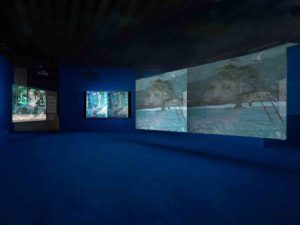
MIA FUNK
I think that a lot of times when people talk about their voice, whether it’s visual language or their writing voice, it’s something that comes out of the way you see the world. And so I think that that style has probably been a part of me all my life because it’s the way I see the world. In fact, I have a few different styles when I do portraits, sometimes it’s a bit more solid. But in terms of my oil paintings, I use semi-transparent washes inspired by some of the techniques I learned before I transitioned entirely to oil paint. I learned watercolor, which is dependent on washes, and I learned the old fresco technique as well, which gives off a kind of powdery light and lightness that’s not traditionally associated with oils. So some of these techniques that I had learned, I bring them over into the technique of oil painting that may perhaps make it a little bit interesting and different.
The style is also literally the way I see the world, I actually have had eye problems all my life. I have very bad myopia and there was a period where I would see large sunspots. I still get these kinds of floaters, so these are motifs that come into my paintings. That’s why it’s a little bit surreal sometimes.
KHANH DINH
So you came a long way in establishing this style. It’s always been there but you have continuously made changes to it, would you say?
MIA FUNK
I think what’s really important is that you should keep your curiosity. So I really always would like to be open to receive new influences, though I may have a certain way of approaching a work of art. And because you can tend to repeat yourself, some people love that, right? They love to feel comfortable. But what I like about doing the interviews is that I can–I don’t even think of them as interviews but rather conversations–have conversations inspired by the life and work of these great creative thinkers and that some things that they share find its way into the work. Sometimes they share things that make me look at the world in a new way, and then that can be added to my visual language.
And that’s one thing I do like to share with students. Say, if I read a book, or see a film, or whatever I’m experiencing, I always ask myself what I learned. It’s not enough to have passive intelligence where things pass through us, and we don’t do something with it. And I feel like that’s a kind of dead knowledge. It’s what you do with it, whether you use it to try to make the world a better place or connect with others. You have to try to take it to the next level because, in some sense, if you don’t then you haven’t really learned from it. It just passes through you.
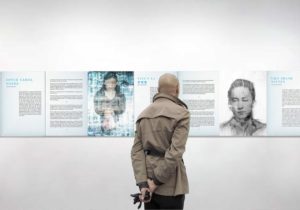
KHANH DINH
Speaking of art, while collaborating with you, a term I have heard you use is the invisible arts. Can you speak a bit more about what you mean by the invisible arts?
MIA FUNK
In this project, we’re lucky to have more notable voices; people who have won Oscars or Emmys or Pulitzer Awards. They’re part of the more celebrated, more visible artistic community. But there are so many members of society who we don’t see or don’t honor as much as we should. We have so many teachers involved and I feel that they’re one of the invisible arts. Something that John Steinbeck said in reference to teachers is “I have come to believe that a great teacher is a great artist and that there are as few as there are any other great artists. Teaching might even be the greatest of the arts since the medium is the human mind and spirit.” But also editors, librarians, producers, all these behind-the-scenes people who really help make things happen and nurture projects should be celebrated.
On a broader level, there are members of society who are not as visible. I recently did an interview with the curator of the Smithsonian’s National Museum of the American Indian. I visited reservations and had conversations with their teachers and artists for our collaboration on a section of our projection elements celebrating Native American culture. That would be an example of another aspect of the invisible arts. So, it’s one of our missions is to value those communities that are less heard of, and I feel lucky that I have these connections to different communities. We now have, in our projection elements, creative works from people from over 60 countries.
KHANH DINH
As a student at the University of Washington, I’m curious to know if there are any projects you are bringing to Seattle, or what the connection is between Seattle in general and the university in particular with TCP?
MIA FUNK
We haven’t fixed the date for the exhibition yet. We’re working on that now because I like to make things really comprehensive instead of just simply have one person or a small group of people represent a region. As the project travels, I realize it’s really important to include and celebrate the local educational and creative community. I was lucky to do interviews with the dancers and the creative team behind the Pacific Northwest Ballet and others from the area, but we’re still building that content. It’s something that you and I are working together on, and we have a few other students at University of Washington focusing on different areas. When we have something that’s more comprehensive then we’ll show it because I think that that’s the most respectful and best way, instead of me just bringing all these national and international voices that have no connection to the region. I was born here, and my parents met at the University of Washington, but I’ve spent much of my life abroad in different cities, so I have always wanted to bring something back home. My earliest memories are on campus because my father used to take me to classes from the time I was a baby, so U of W was really my preschool. And early on this encouraged an idea that learning is fun. I saw no division between learning and work and a kind of play. I wonder how much this early exposure to university life and imaginative inquiry imprinted on me. I think it must have influenced me in some way and that’s why I’m now involved in a project with universities and learning at its core.
KHANH DINH
Since TCP contains a lot of interviews, I would love to learn more about the process. So, first of all, how would you describe the importance of interviews at TCP?
MIA FUNK
For this project and for my process, interviews form the core. For creative people generally, very few things are created without some form of conversation, collaboration, curiosity and engagement with other people. To date, I’ve done most of the interviews because I was there and I had connections to those people, but we’re really broadening it out with the student involvement now, so I like nothing better than to share this. I think the skill of interviewing is so important, not just for the projects or the exhibitions. It’s part of our core content at TCP, but it’s also important as a life skill, whether you’re in journalism or not. And again, I don’t like to say interview, I like conversation because that would be the style of my approach, but everything is a kind of interview and negotiation. When you’re meeting your fiancee’s family or a job interview, those are situations where you have to know how to present yourself.
I don’t know if it’s an art of listening but just the capacity to receive and to learn from what is in front of you, and that’s the way you make connections with people. That’s how you get inspired. But if you’re not listening and you don’t know how to ask the questions that will give you the most information or inspiration, then you’re really missing out in life.
And so I think of it as very important and a learning process. It also really operates in our project as a one-on-one mentorship where I will be mentoring students. When we are in the same city it will be side by side, I’ll bring them along to interviews so they can observe and participate and ask questions. But if they’re not in the same city, then we’ll share audio and do video conference calls. But then as they’re getting a chance to meet and interview these notable creative thinkers, then they’re also being mentored by them.
If you get a chance to meet people who have been very passionate and have done great things in their life and they inspire you, it’s important to learn how they did it and why they did it. These are important questions. These creative projects might have not come to them immediately, so knowing a little bit about their life story and the reasons behind what they created is just so fascinating. I think it is as fascinating or even more fascinating sometimes than the work itself.
KHANH DINH
You did mention that it’s important to have listening skills. Can you elaborate more on that?
MIA FUNK
I think that everyone knows how to listen. I think it should be natural. But I guess some people don’t know how to listen because I’ve had conversations with some people where they weren’t taking anything in. They were only talking. So it’s just being able to absorb and then to show that you’ve learned, that you’ve heard what’s been said. What I always ask students to do, and they’re part of the podcasts now, is to share what they learned and how they apply that to things they’ve done or things they’re planning on doing in their future career. So that would be a demonstration of deep learning. And listening is all kinds of things. I mean it’s not just with the ears, it’s with the eyes, it’s picking up non-verbal cues, the tone, and the subtext.
Sometimes I do feel that with our technology-dominated world, in some ways, we have been inundated with so much information, and it comes to us already curated, already presented through a machine interface. So some of those older forms of listening and picking up non-verbal cues and tones can be lost if we’re not careful about it. We can forget how to take in that information, which is often just as rich and communicates quite a lot.
KHANH DINH
I’m currently taking a course on conducting interviews, and listening is one very big part that is commonly mentioned. Another very important part is preparation. So, how do you usually prepare for an interview and how is the preparation process different for different kinds of interviews, say, recorded or non-recorded, in-person or through phone and such?
MIA FUNK
My style might be different from other people’s styles. I should say that because at this stage now I’ve done hundreds of interviews, so I can rely on a certain level of experience with people across a variety of disciplines, I can always call on insights that someone else in that discipline has shared. Or, if it’s a discipline that I am actively involved in, the research is important, but then also having those life experiences means that we can, for instance, sit down and talk like an artist to artist.
If I’m doing an interview outside of my discipline, which sometimes happens, I’ve done interviews with astronomers and physicists, that’s quite outside of my experience. So we have to find a common ground that I could relate to. In those cases, research is very important. I research a lot. Then after that, some people will feel less comfortable with this, but I memorize all my questions so that I feel like I’ve learned it deeply enough. And then, in the moment of the interview, we have this eye contact and there’s a large element of spontaneity so I’m taking in what they’re saying and not relying on notes. And, I used to be quite unconventional, I would have no notes at all. Now I have this tablet that I’ll bring with me in case I need to consult it, but I don’t look down. Also, I think I mentioned this, I have bad eyesight, so if I glanced down I’m not going to see anything, it would be too annoying for me to be squinting and looking down, and it would take them out of the moment. I do try to encourage that conversational style, and I’ll just know the points that I want to hit, so it’s a very prepared but spontaneous technique.
However, in others, I realize that that’s not always possible. I have conducted shorter interviews where you have maybe just 5 or 10 minutes, and so you really should be so scripted because you just won’t have the chance, whereas our average interview is at least an hour. Sometimes it goes on for hours, so I have a bit more room to indulge what interests me. But if you’re doing, say, taking someone off the street or something that only allows five minutes of connection, I think you have to be really targeted and to make sure that you get what you want.
I’m just thinking now about a recent interview with the photographer Mark Seliger, and he is very notable. He worked a lot with Rolling Stone magazine, he’s photographed all these actors and celebrities, and he also photographed President Obama and the Dalai Lama. He does interesting personal work too, dealing with the Holocaust and so on. He is a great photographer. But he has time limitations because these celebrities sometimes just don’t have the time. He shared as he was photographing Obama he only had five minutes so he had to know what he had to get that in five minutes so he couldn’t be as loose with it. But I am lucky that the people involved, even though they’re quite well known, give more of their time. And I think that it helps encourage them to relax and really share more of their lives.
KHANH DINH
You did mention that you use a lot of non-verbal cues to show them that you are engaged. You also mentioned that you maintain eye contact. So, I was wondering, how do you let your guests know that you’re engaged while conducting a non face-to-face interview?
MIA FUNK
We’re now doing podcasts and prefer something that’s recorded that has a human voice that we’ll then transcribe. However, I always believe you should accommodate the requests of the interviewee. And sometimes that can lead to misunderstandings, as you say, since people don’t get all the cues on the phone, so sometimes it takes people a while to warm up. You really want to be thinking about what their discipline is because the way you communicate with a writer is different than with a visual artist, a scientist or a composer. These are all the different disciplines that have different ways of looking at the world.
Sometimes it’s a nonverbal skill, but you’re using the tone of your voice. I found it interesting that some people said to me that it’s difficult when you’re interviewing on the phone, but if I compare interviews I’ve done on the phone, although I always prefer face to face because you have all that information, the responses and the depth of interview has been just as good. Sometimes you could say even better, for it might suit some people better. Strangely enough, I’ve done interviews with people on the phone often when I’ve known them or met them. They may be friends in person, but because they live in another city and when I saw them there wasn’t a chance to do an in-depth interview. And so we reconnected for the interview by phone. That’s happened.
So some people will prefer a different format, and I would always do the kind of interviews that they prefer. And I understand, as someone who cares deeply about language, that some writers will prefer to do a written exchange. But then I always prefer a back and forth exchange where I send a question and they respond so it’s like a conversation because they’re almost their truest self when they’re writing. They can be very spontaneous of course and they’re great talkers, but language for them operates on a poetic symbolical level more so than with most people. So if we’ve spoken many times but for the interview they say, “Oh let’s do it in writing,” then that’s fine. Through email, I’ll make my questions longer. They say that, journalistically, you should actually have short questions. But I do that because I do want them to know the depths of my research, and because I can’t communicate that nonverbally or communicate that before as you would do in an audio interview, I really have to show them that I’m really fascinated in their body of work. So those questions will be a bit longer, whereas in the recorded exchange, often I won’t even finish my sentence, once they know where the question is going, then I don’t need to be so word perfect. I’ll just get out of the way and let them answer it
KHANH DINH
What information or what type of information do you usually like to get from these interviews. Do you usually focus on, maybe, their personal lives, their inspirations, or do you usually focus on their artwork?
MIA FUNK
Well, for TCP, because it’s an educational initiative, it’s about body of work, life, and creative process. So obviously I’m interested in their process and how and why they’ve done their work.
And I don’t generally focus just on their latest work, which would be the focus of a lot of interviews when they’re promoting something. I like to see that within the context of what they’ve done before. What the director of the curator of the Dublin Writers Museum and the James Joyce Museum has said is that The Creative Process is really like a portrait in words. It’s a portrait of them in words that we collaborate on and not just their latest project which will only give you a slice.
Since I’m interested in the intellectual or educational benefits, I’ll touch on their life, but I wouldn’t be looking for a confessional interview or to make them uncomfortable. Because I respect their work so much, we could discuss how their life may have inspired their work, or how their journey brought them to certain themes that they have in their work, but I wouldn’t want to focus entirely on that. That’s something that they may share, but I wouldn’t be pressing for that. That might make our focus a little bit different because a lot of journalism might want a scoop in that way, but our interviews are intimate too because as our project deals primarily with a lot of people in the arts, of course, that personal life comes to bear, even if they’re not doing work that’s strictly autobiographical.
KHANH DINH
Next, I would love to talk about the social impact of TCP. Considering the rapid growth of the project itself, does it have any direct impact on the surrounding community?
MIA FUNK
I don’t know how you measure it, but I feel like the fact that we could talk within universities, which are of course a microcosm of the community, is very impactful. We also have a lot of different strands that go out of the university, outside of what you might think of as the elite sector of society. I had a project in New York in the Hamptons, it was an immersive project, and I lived in the community. And of course The Hamptons is a very elite community, very talented creative people live there, very wealthy people live there, and that’s generally what we view it as. It was important when I went there and that I had the chance to engage and learn and do interviews across many disciplines, but I also knew historically, The Hamptons was not always a wealthy enclave. There’d been an artist colony when people like Jackson Pollock were starting off, before he had any money. Going further back, and there still are although it’s not recognized as much, there are a tribe of Indians who lived in The Hamptons: the Shinnecock. There were other tribes as well, and these places were also named after Indian tribes, some of which now have vanished. So, I thought it was very important in terms of reaching out to the communities to visit those reservations and to have conversations with them, with educators and community leaders and artists there to hear their stories. I didn’t get to focus on underrepresented communities as much in The Hamptons, so I think it’s very important. I would think I was missing out by going to The Hamptons to just focus on more elite communities.
Another part of our project is the Inner City & High School program. Although we are collaborating with a lot of universities, because again that’s where so much creativity takes place and many social movements get started, we also want to include those from both ends of the educational spectrum. We have an Inner City & High School project that we’re expanding right now, and that’s including after school writing clubs, open mic events. We have a number those pieces in our projection elements and on our web site, and some pieces have been adapted for their university applications. I’m always amazed by the resilience of the students who I’m lucky to work with, that great team teachers and young artists and writers mentors who, really, they’re my heroes because they’re not paid very well at all. Just the joy of teaching is so important. Anyway, the schools where we were doing this project in, they’ve noticed a reduction of out of school suspensions by over 50 percent. So, we know that the arts are not just for decoration, it’s a chance for people to be heard and to keep them on their educational track. The healing power of the stories and arts is really important. So I try to do what I can to include and embrace different elements of society, but I am one person, so sometimes I get torn in too many directions. I’m lucky to work with great people.
KHANH DINH
Since you are traveling a lot, and we are a non-profit, so how did you get funding? Or how do you accommodate the traveling or the collaboration with these different organizations?
MIA FUNK
That’s important too. Sometimes it’s difficult, since I’m not a professional fundraiser. So, initially, I didn’t know that the project would grow so much and so quickly. It was difficult in the beginning. I thought it would go to just a few universities, and every university I wrote to said yes. When it was launched at the Sorbonne, they held it only three months after I had contacted them, but luckily I’d had content for that.
Sometimes I came across wonderful interviewees that were giving their time, so I didn’t want to lose these opportunities by focusing fundraising. So I give 100 percent of my time to this project, which was founded on giving.
I self-funded the project through the sale of my paintings just because I didn’t have time to stop and fundraise, and now we’ve had a little sustaining finance. And that then allowed us to do some more traveling and go to places like Greece or America. Now I’m taking a little bit of time out to do some of that fundraising because exhibitions do cost money, even though we’re lucky to have the universities give their exhibition spaces. For instance, where we started, it was in the main hall of the original Panthéon Sorbonne building with ironwork beams that were the inspiration for the Eiffel Tower. We had a great space there that we filled with interviews and artworks. 5,000 square feet. That’s all given, but there are other expenses. So I’m taking a little bit of time out to do that.
I would also like to be also to give stipends to those involved and get more support to make sure that the exhibitions are the best that they can be in terms of display. Large folio editions are given to the archives of participating museums, and those are unique hand-drawn portraits. The exhibition changes as it goes from university to university, so no one exhibition is alike because it’s a celebration of people from the region. So it’s given as this large hand-embellished folio edition, gifted to the archive of the university so it can be shown for however long they want. That does take a little bit of money, so we are looking for supporting finance just so that we can complete the tour of exhibitions to bring it to all the places who want to take part.
KHANH DINH
So TCP is going to Seattle and other states in America?
MIA FUNK
Yes. So we’re working now with the experiential learning departments of over 70 universities. I’m not sure that we can, I mean I would love to but of course, we’re talking about the expense of things, bring it to all 70 of those universities. We’re actively working with them, we’re sharing interviews and working with their faculty and students. So what’s nice with projection is you can bring the projection elements there and also to the high schools and places that we could not afford to offer a full physical exhibition. Yes, we’re working towards bringing the physical exhibition to University of Washington since they’re in our network of leading universities who are taking part.
We’re lucky that we’re also working with collaborating curators who are students, or like you, who are working on interviews and podcasts, and that really helps because you have so much local knowledge, while I may just know something from a distance or I know some people I’m friends with. We’ll have students, say, who are studying astrophysics and so they’ll say “Oh, there’s this scientist teaching at my university ” or they know different people in the faculty and make recommendations.
KHANH DINH
Is there anything else you would like to mention?
MIA FUNK
Well, I’m looking forward to the chapter and collaborating at the University of Washington. We haven’t focused a lot on people involved in business. I think that one of the natural resources of the community in Seattle is that it has great creative innovators in terms of business and technology. So some of those voices would be interesting to include, and that’s something that we can collaborate on.
But alongside that, I do also always like to focus on our common humanity. We see now a lot of movements to do with preserving nature, that’s very important, but I also believe in preserving how we care for others. Something I say often with this project is:
The nature of learning is changing. Culture is not a routine matter. We all live on one planet we call home. We’re all human and have only one earth and one life. And what is evident is that traditional values and culture are relevant not just in society but throughout the world. It’s not the money you earn that gets respect. It’s not knowledge alone. It’s only when they’re combined with human values: integrity, responsibility, consideration for others, can we become a better person, a better human being, and of course respected by society. We should never forget the importance of the humanities and individualism and our own creativity. We were not put on this earth to be consumer slaves connected to everything except ourselves.
This is an excerpt of the interview. The full audio will be posted in the coming days and published by participating university journals.
Courtesy of The Creative Process Project











































